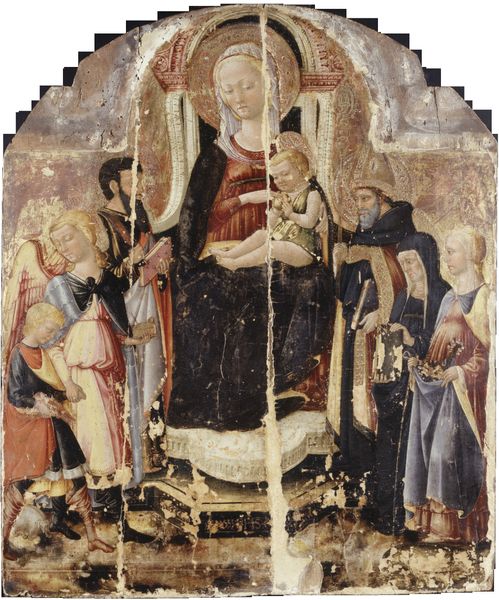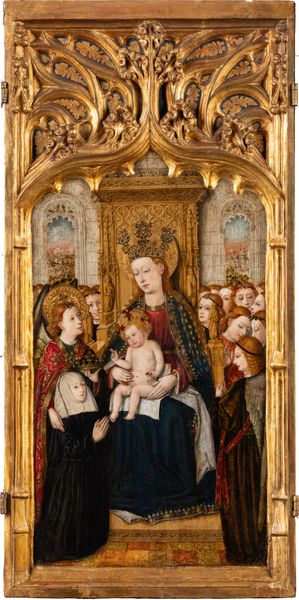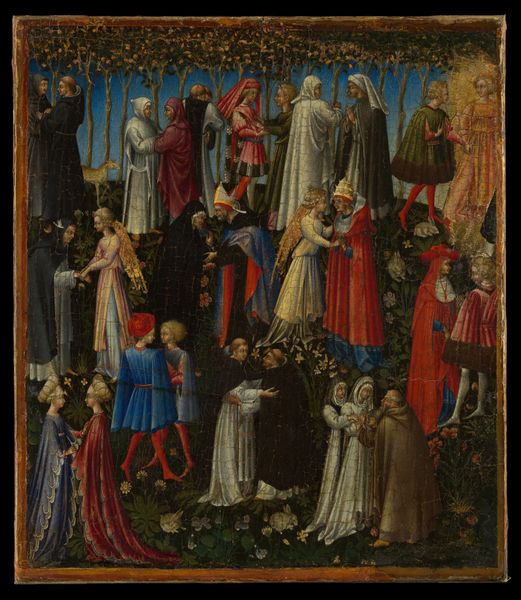
panel, tempera, painting
#
portrait
#
woman
#
panel
#
tempera
#
painting
#
figuration
#
oil painting
#
child
#
12_15th-century
#
history-painting
#
italian-renaissance
#
angel
Dimensions: width_ 16.2 cm
Copyright: Städelsches Kunstinstitut
Editor: This panel painting, "Virgin with Child Enthroned, Surrounded by Angels," dates back to about 1430. It’s tempera on panel, and currently residing here at the Städel Museum. There's such detail, particularly in the rendering of the robes. What jumps out at you when you look at this? Curator: The use of tempera is key. Consider its origins—pigments laboriously ground and mixed with egg yolk, applied to a gessoed wooden panel. That labor itself speaks volumes about the cultural value placed on this image of the Virgin. Editor: Absolutely. The level of craft is impressive. Curator: Think about the patronage system too. Someone commissioned this; they paid for the materials, the artist's time, the very devotion embedded in the process. Does this alter your viewing, knowing what went into the making of this, not just artistically but also socially and economically? Editor: Definitely. The preciousness of the materials—the gold leaf, the vibrant pigments—speak to wealth and status. It shifts my focus away from simply the image of the Madonna and child and towards the material realities of its creation. Curator: Exactly! The divine is rendered through very earthly, carefully chosen substances and techniques, pointing towards complex exchanges between the religious, the economic and the artisanal worlds of the 15th century. Considering the social context, materials, and the meticulous tempera technique deepens the art appreciation. Editor: That really changes my perspective! I was initially drawn to the serenity of the scene, but now I am really drawn to the layers of meaning in materials and the act of creation. Curator: That’s precisely how focusing on the material conditions and craftsmanship of early Italian Renaissance pieces can open new windows into our understanding.
Comments
No comments
Be the first to comment and join the conversation on the ultimate creative platform.













